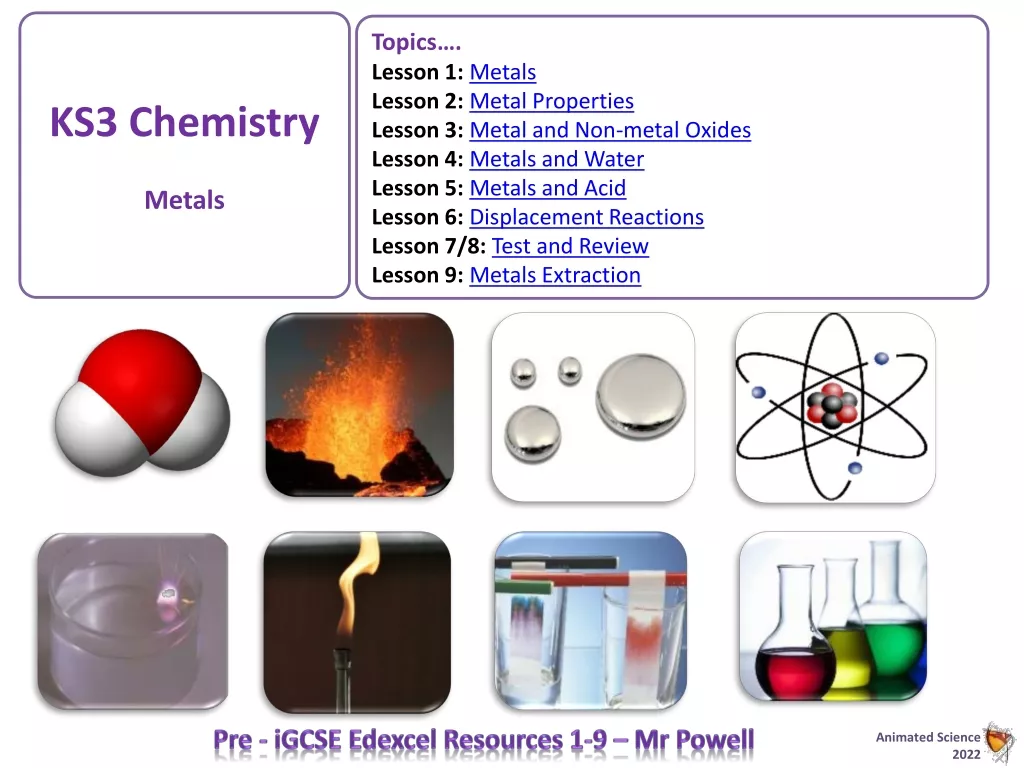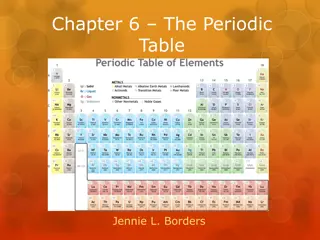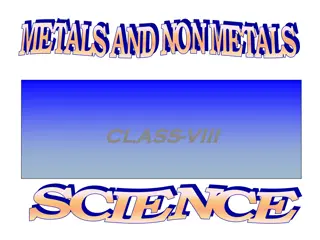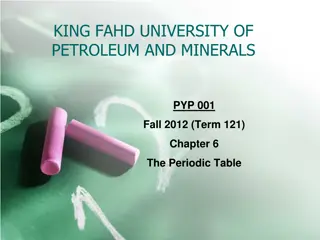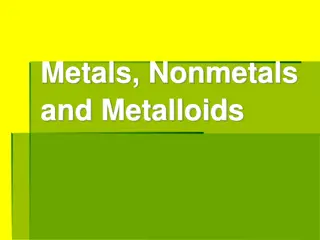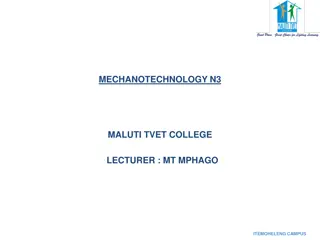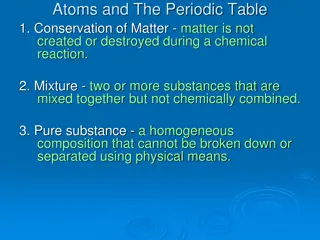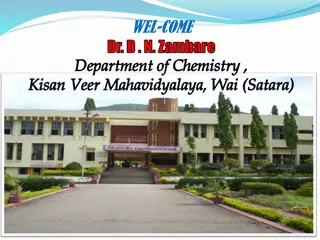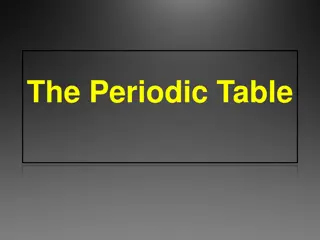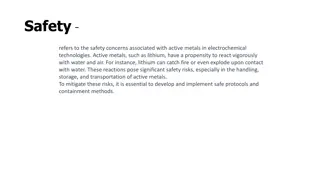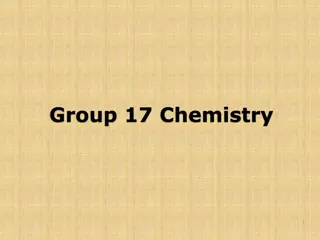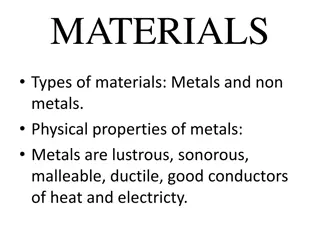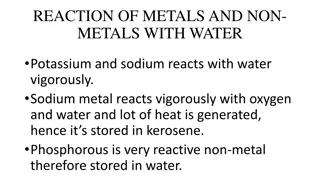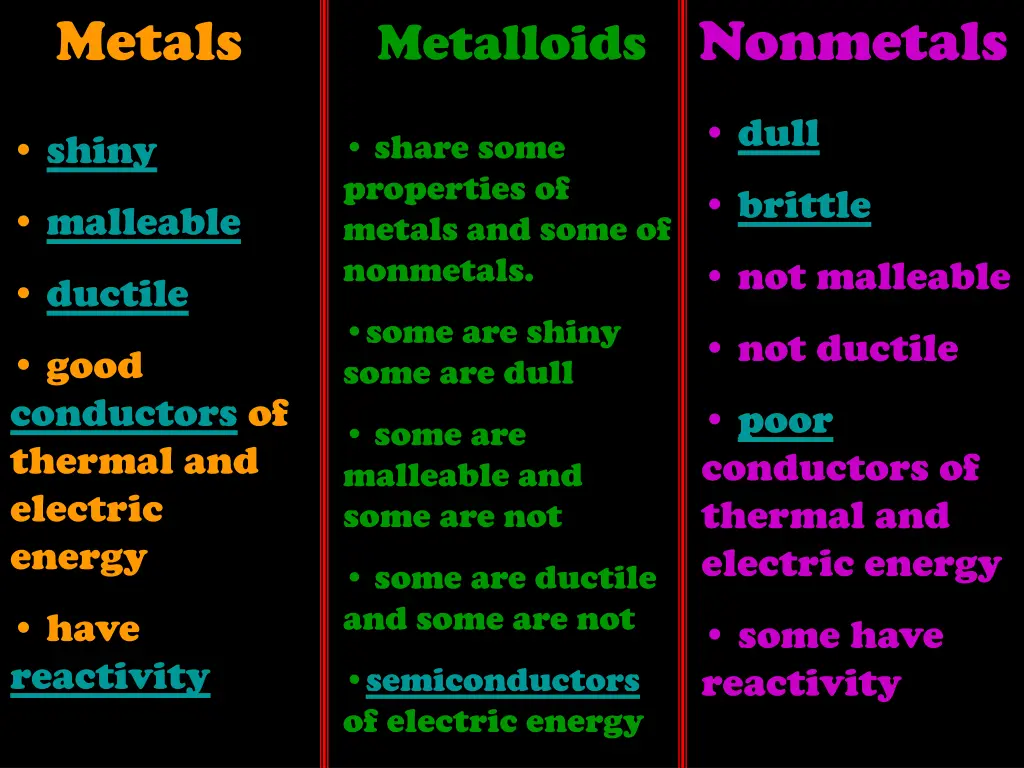
Understanding Properties of Metals, Nonmetals, and Metalloids
Explore the characteristics of metals, nonmetals, and metalloids such as malleability, ductility, conductivity, reactivity, brittleness, and more. Learn how these elements differ in their physical and chemical properties.
Download Presentation

Please find below an Image/Link to download the presentation.
The content on the website is provided AS IS for your information and personal use only. It may not be sold, licensed, or shared on other websites without obtaining consent from the author. If you encounter any issues during the download, it is possible that the publisher has removed the file from their server.
You are allowed to download the files provided on this website for personal or commercial use, subject to the condition that they are used lawfully. All files are the property of their respective owners.
The content on the website is provided AS IS for your information and personal use only. It may not be sold, licensed, or shared on other websites without obtaining consent from the author.
E N D
Presentation Transcript
Metals Nonmetals Metalloids dull shiny share some properties of metals and some of nonmetals. brittle malleable not malleable ductile some are shiny some are dull not ductile good conductors of thermal and electric energy poor conductors of thermal and electric energy some are malleable and some are not some are ductile and some are not have reactivity some have reactivity semiconductors of electric energy
Malleable is the ability of a metal to be hammered into a thin sheet.
Ductile is the ability of a metal to be drawn into thin wires.
Conductor means an element has the ability to carry electric current or heat (thermal energy).
Reactivity means an element has the ability to combine with other elements.
Brittle means an element breaks easily.
Shiny is the ability of an element to reflect light.
Dull is not being shiny (does not reflect light..
Semiconductors carry some electric current when certain conditions are present.
They can not carry heat or electric current through them.

